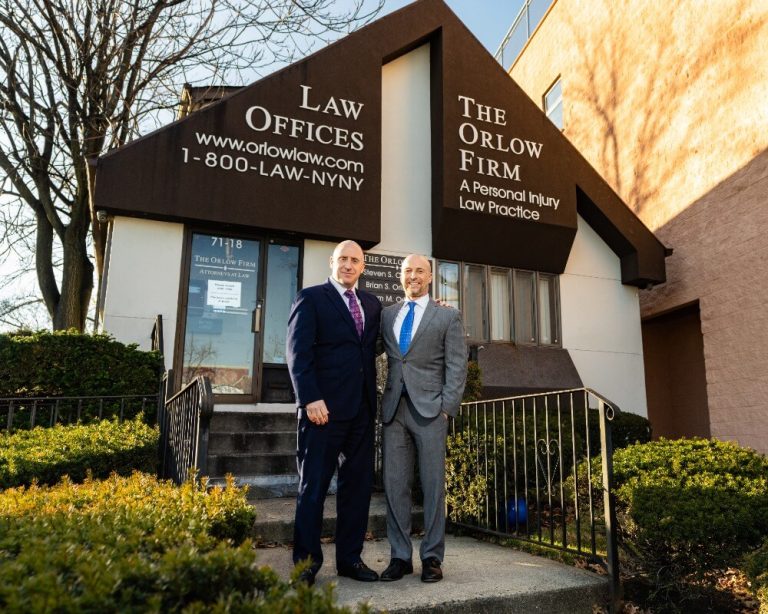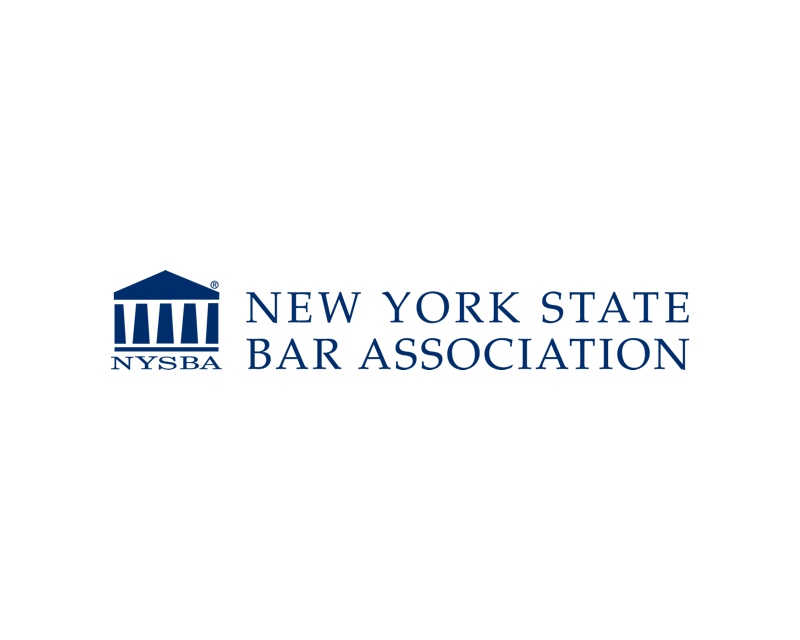What is Breach of Duty in Personal Injury Cases?
Quick Answer: Breach of duty in personal injury cases happens when someone fails to act with reasonable care, causing harm to another person. In New York City, proving this means showing the responsible party did not meet the safety standards expected in that situation. This breach is a key part of establishing liability for injuries.
How Breach of Duty is Determined in New York City Cases
In New York City personal injury cases, determining whether there has been a breach of duty involves a careful look at what the responsible party was expected to do and whether they failed to meet that expectation. The process focuses on whether the person or entity acted in a way that a reasonable person would not have under similar circumstances.
Here are the key steps used to determine breach of duty in NYC personal injury claims:
- Establishing the Duty of Care: First, the court confirms that the defendant owed a legal duty to the injured party. This duty depends on the situation. For example, drivers must follow traffic laws to keep others safe, and property owners must maintain safe conditions for visitors.
- Comparing Conduct to Reasonable Standards: Next, the defendant’s actions are compared to what a reasonable person would have done. If they acted carelessly or ignored obvious dangers, this may show a breach. In New York City, this standard takes into account local laws and common practices, such as the congested traffic and pedestrian-heavy streets.
- Looking at Evidence: Evidence is crucial in proving breach of duty. This may include witness statements, photos or videos of the accident scene, police reports, expert opinions, and documentation of injuries. For example, in a slip and fall case, evidence might show that a property owner ignored a wet floor without warning signs.
- Using Specific NYC Rules and Regulations: New York City has its own rules that can affect breach of duty. For example, building codes, traffic signals, and pedestrian right-of-way laws create specific duties. Failing to follow these local rules can clearly demonstrate a breach.
- Considering Foreseeability: The law also looks at whether the defendant could have reasonably predicted that their actions might cause harm. If a hazard was obvious and could have been prevented, failing to act can be seen as a breach.
For example, if a NYC taxi driver runs a red light and hits a pedestrian, the driver breached their duty by not following traffic laws designed to protect others. Similarly, if a landlord fails to fix broken stairs in a busy apartment building, they may have breached their duty to keep tenants safe.
Because New York courts rely heavily on what an ordinary person would do, the facts and evidence in each case are very important. Determining breach of duty is often part of a larger legal process that includes proving negligence and showing that the breach caused the injury.
If you believe someone’s failure to act responsibly caused your injury in New York City, it’s important to gather evidence and understand how breach of duty applies to your case. For help with this process, you can contact The Orlow Firm at (646) 647-3398.
Common Examples of Breach of Duty in Personal Injury Situations
In personal injury cases, a breach of duty happens when someone fails to act as carefully as they should. This failure leads to harm or injury to another person. Here are some common examples of breach of duty in personal injury situations, especially relevant in New York City:
- Car Accidents: Drivers must follow traffic laws and drive safely. If a driver runs a red light, speeds, or drives distractedly (like texting while driving), they may have breached their duty to other drivers and pedestrians.
- Slip and Fall Injuries: Property owners must keep their premises safe. If a store ignores a wet floor sign or fails to fix broken stairs, they may have breached their duty, leading to someone slipping and getting hurt.
- Construction Site Accidents: Construction companies and workers must follow safety rules. If they don’t provide proper safety gear or fail to secure the work area, they may breach their duty, causing injuries to workers or passersby.
- Medical Malpractice: Doctors and medical staff have a duty to provide proper care. If a healthcare professional makes a serious mistake, like giving the wrong medication or missing a diagnosis, this can be a breach of duty.
- Defective Products: Manufacturers must ensure their products are safe. If a company sells a dangerous product without proper warnings or recalls, this can be a breach of duty that causes injury.
- Dog Bites: Dog owners have a duty to control their pets. If a dog attacks someone because the owner did not restrain it properly, that is a breach of duty.
In New York City, these examples often come up in personal injury claims. For instance, the busy streets increase the chance of car accidents due to driver negligence. Similarly, property owners in public spaces must be extra careful to prevent slip and fall injuries. Understanding these common breaches can help you recognize when someone else’s carelessness might have caused your injury.
If you believe you were hurt because someone failed to act responsibly, it is important to gather clear details about what happened. This can include photos, witness statements, or official reports. These pieces of evidence help show that a duty was owed and that it was breached, leading to your injury.
The Connection Between Breach of Duty and Negligence
In personal injury law, breach of duty and negligence are closely connected concepts. Understanding how they relate can help you grasp the basics of your case in New York City.
Negligence means that someone failed to act with reasonable care, which caused harm to another person. To prove negligence, you generally need to show four things:
- Duty of Care: The person had a legal obligation to act carefully toward you.
- Breach of Duty: They did not meet that obligation—they broke the rule of care.
- Causation: Their breach directly caused your injury.
- Damages: You suffered actual harm or losses because of the injury.
The breach of duty is the key step where negligence becomes clear. It means the person did something wrong or failed to do something they should have done. For example, a driver running a red light breaks their duty to drive safely. This breach can then lead to an accident and injury.
In New York City personal injury cases, the breach is often about whether the person acted how a reasonable person would in the same situation. The law expects people to behave in a way that avoids putting others at risk.
Here are some ways breach of duty and negligence work together:
- Duty sets the standard: It defines what is expected, like obeying traffic laws or maintaining safe property conditions.
- Breach shows failure: It proves that the person did not meet that standard, such as ignoring a stop sign or leaving a wet floor unmarked.
- Negligence ties it all: It connects the breach to the injury, showing the breach caused harm.
Without proving breach of duty, you cannot establish negligence. Breach is the action (or inaction) that breaks the duty and makes the other person legally responsible.
For example, if a building owner in NYC fails to fix a broken stair and someone falls, the owner breached their duty to keep the property safe. That breach leads to a negligence claim if the fall causes injury.
In summary, breach of duty is the specific failure to act carefully, and negligence is the legal claim that results when that failure causes harm. Both are essential parts of personal injury cases in New York City.
Proving Breach of Duty: What Evidence is Needed?
To prove a breach of duty in a personal injury case in New York City, you must show clear evidence that the responsible party failed to act as a reasonable person would under similar circumstances. This means demonstrating that they did not meet the expected standard of care that the law requires.
Here are the key types of evidence commonly used to prove breach of duty:
- Witness Statements: Testimonies from people who saw the accident or the conditions leading to it can help show how the responsible party acted or failed to act.
- Photographs and Videos: Images of the accident scene, property damage, or hazardous conditions can support your claim that the defendant did not take proper care.
- Official Reports: Police reports, inspection records, or government citations may document violations of laws or safety rules that relate to the breach of duty.
- Expert Opinions: In some cases, experts such as engineers, medical professionals, or safety specialists can explain how the defendant’s actions fell short of the required standard.
- Medical Records: While primarily used to prove injury, medical records can also show the link between the breach and the harm suffered.
- Documents and Correspondence: Emails, letters, or contracts can reveal knowledge of dangerous conditions or ignored warnings that contributed to the breach.
In New York City, courts often look closely at what a reasonable person would have done in the same situation. For example, if a property owner failed to clear ice on a sidewalk, evidence like weather reports, photos of the sidewalk, or prior complaints can help prove they breached their duty to keep visitors safe.
It is important to gather evidence quickly after an accident because physical conditions and memories can change over time. Consulting with legal professionals early can help identify what evidence is most useful and how to preserve it properly.
Ultimately, proving breach of duty depends on showing that the defendant’s actions fell below the standard expected under the law and directly caused your injury. Collecting strong, clear evidence is essential to support your personal injury claim in New York City.
How Breach of Duty Affects Your Personal Injury Case Outcome
In a personal injury case, proving a breach of duty is a key factor that can shape the outcome of your claim. A breach of duty occurs when a person or entity fails to act as a reasonable person would under similar circumstances. This failure can lead to an injury, and showing that breach is essential to holding the responsible party accountable.
How breach of duty affects your case:
- Determines liability: If you cannot prove that the other party breached their duty of care, your case may not move forward. The court needs to see that the defendant failed to act responsibly, which directly caused your injury.
- Influences damages awarded: When a breach is clearly established, it strengthens your claim for compensation. This can include medical bills, lost wages, and pain and suffering. Without proof of breach, you may receive little or no compensation.
- Shapes settlement negotiations: Insurance companies and defendants consider breach of duty when deciding whether to settle or fight a case in court. A strong breach claim may encourage a fair settlement offer.
- Connects to negligence: Breach of duty is one part of negligence, which also includes duty of care, causation, and damages. Without proving breach, negligence can’t be established, and the claim may fail.
In New York City, courts look carefully at the specific facts to decide if a breach occurred. For example, a driver running a red light clearly breaches their duty to obey traffic laws and drive safely. On the other hand, in slip and fall cases, the property owner’s duty and breach depend on whether they knew about the hazard and failed to fix it.
Because breach of duty is so important, gathering strong evidence is vital. This can include eyewitness accounts, photographs, expert testimony, and official reports. The clearer the proof of breach, the better your chances of a favorable outcome.
In summary, breach of duty directly impacts whether your personal injury case can succeed, how much compensation you might receive, and how the case is resolved. Understanding this concept helps you know what to expect and how to prepare your claim in New York City.
Differences in Breach of Duty Laws in New York Compared to Other States
While the basic idea of breach of duty is similar across the United States, New York’s laws have some important differences compared to other states. These differences can affect how personal injury cases are handled and how fault is determined.
1. New York’s No-Fault Insurance System
One major difference is New York’s no-fault insurance law for car accidents. This system requires that each driver’s own insurance covers certain medical costs and lost wages regardless of who caused the accident. Many other states either do not have a no-fault system or have different rules about when you can file a lawsuit. In New York, this affects breach of duty claims because you often cannot sue for pain and suffering unless your injuries meet a serious injury standard.
2. The Serious Injury Threshold
New York requires that an injury be “serious” enough to sue for damages beyond what no-fault insurance covers. This means that even if someone breached their duty to you, you cannot bring a personal injury lawsuit unless your injury fits specific categories, such as fractures or permanent disfigurement. Many other states do not have this strict threshold, allowing more cases to proceed based on breach of duty.
3. Standard of Care in Different Situations
New York applies a reasonable person standard to determine whether a duty was breached. This means the person must act as a reasonable person would under similar circumstances. While this is common in many states, New York courts sometimes consider the specific context of NYC life—like crowded sidewalks or busy traffic—when deciding what is reasonable. This local context can influence breach of duty findings.
4. Comparative Fault Rules
New York follows a pure comparative negligence rule. This means that if you are partly at fault for your injury, your compensation is reduced by your percentage of fault but you can still recover damages. Some states use different rules, such as barring recovery if you are more than 50% at fault. This affects how breach of duty and fault are assigned in cases involving shared responsibility.
5. Statute of Limitations
New York has specific time limits for filing personal injury claims, usually three years from the date of injury. Other states may have longer or shorter periods. Missing this deadline can prevent you from pursuing a breach of duty claim.
Summary of Key Differences:
- No-fault insurance: New York’s system limits lawsuits unless serious injury criteria are met, unlike many states.
- Serious injury threshold: Required in New York to proceed with pain and suffering claims.
- Reasonable person standard: Applied with consideration of NYC’s unique environment.
- Comparative fault: Pure comparative negligence allows recovery even if partially at fault.
- Statute of limitations: Typically three years in New York, which differs by state.
Understanding these differences is important if you have been injured in New York City. The laws here shape how breach of duty is proven and how your case will proceed compared to other states. If you believe someone’s breach of duty caused your injury, it helps to know the specific rules that apply in New York.
If you have questions about how breach of duty laws affect your personal injury case, you can contact The Orlow Firm at (646) 647-3398 for guidance based on New York law and local practices.
What to Do If You Suspect a Breach of Duty Caused Your Injury
If you believe that a breach of duty caused your injury, it is important to take several key steps to protect your rights and build a strong personal injury claim. A breach of duty means that someone did not act as carefully as they should have, leading to your injury. Here is what you should do:
- Seek Medical Attention Immediately. Your health and safety come first. Get medical care even if your injuries seem minor. Medical records are also important evidence in personal injury cases.
- Document Everything. Write down details about how the injury happened as soon as possible. Include the time, place, people involved, and what you observed. Take photos or videos of the scene, any property damage, and your injuries.
- Report the Incident. If your injury happened at work, in a public place, or due to a vehicle accident, report it to the proper authorities or supervisors. For car accidents in New York City, contact the police and get a copy of the accident report.
- Preserve Evidence. Keep any physical evidence related to the injury. This can include damaged items, clothing, or other materials connected to the accident.
- Collect Contact Information. Get the names and contact details of any witnesses, responsible parties, or others involved. Witness statements can help prove a breach of duty.
- Notify Your Insurance Company. If your injury relates to a car accident or property damage, inform your insurance provider promptly. Follow their instructions carefully to avoid losing benefits.
- Consult a Personal Injury Attorney. Laws about breach of duty and negligence can be complex, especially in New York City. An attorney can review your case, explain your rights, and guide you through the legal process.
- Avoid Giving Recorded Statements or Signing Documents Without Legal Advice. Insurance companies may request statements or ask you to sign forms. Do not agree to anything before speaking with a lawyer.
Taking these steps quickly helps protect your ability to prove that someone breached their duty and caused your injury. In New York City, courts require clear evidence that the responsible party failed to act reasonably under the circumstances. The more documentation and information you gather early on, the stronger your case may be.
If you have questions or need assistance understanding how breach of duty applies to your situation, The Orlow Firm is available to provide guidance. You can reach us at (646) 647-3398 for a confidential conversation about your personal injury concerns.
Legal Time Limits for Breach of Duty Claims in New York City
In New York City, legal time limits for breach of duty claims fall under what is called the statute of limitations. This law sets the deadline for filing a personal injury lawsuit, including cases where someone breached their duty of care and caused injury.
For most personal injury claims in New York, the statute of limitations is:
- Three years from the date of the injury.
This means you generally have three years to file a lawsuit after the injury happened. If you miss this deadline, the court will likely dismiss your case, and you may lose the right to seek compensation.
However, there are some important details to keep in mind:
- Discovery rule: In some cases, the injury or breach of duty may not be immediately obvious. New York law sometimes allows the limitation period to start when the injury was discovered or should have been discovered with reasonable care.
- Claims against government entities: If your claim involves a city agency or other government body in NYC, the time limit is shorter—usually just 90 days to give notice of your claim, followed by one year and 90 days to file a lawsuit.
- Special cases: Certain types of claims, such as medical malpractice or claims involving minors, may have different time limits or exceptions.
Because these rules can be complex, it is important to act quickly if you believe a breach of duty caused your injury. Waiting too long can prevent you from pursuing your case.
If you or a loved one has been hurt in New York City and suspect a breach of duty, it is wise to contact a personal injury attorney as soon as possible. Early action helps protect your legal rights and preserves important evidence.
For assistance understanding the legal time limits that apply to your situation, please call The Orlow Firm at (646) 647-3398. We can help explain your options and next steps.
How The Orlow Firm Supports Clients with Breach of Duty Cases
When clients come to The Orlow Firm with personal injury cases involving a breach of duty, we focus on providing clear, step-by-step support throughout their legal journey. Understanding breach of duty can be complex, especially in New York City where local laws and standards apply. Our approach is to guide clients with patience and clarity while working carefully to build a strong case.
Here is how The Orlow Firm assists clients in breach of duty cases:
- Detailed Case Review: We begin by listening carefully to your story and reviewing all facts related to the injury. This includes gathering medical records, accident reports, and any other relevant documents to understand how the duty of care may have been breached.
- Explaining Legal Concepts Clearly: We make sure you understand what breach of duty means in your case. This includes explaining how the law applies in New York City and what must be proven to show that someone failed to meet their legal responsibilities.
- Gathering Evidence: To prove breach of duty, strong evidence is needed. We help collect witness statements, expert opinions, photographs, and other proof that show how the responsible party acted negligently.
- Communicating with Insurance Companies: Insurance claims can be confusing and frustrating. We handle all communications with insurance adjusters to protect your rights and make sure your claim is fairly evaluated.
- Assessing Damages: We carefully evaluate all your losses, including medical bills, lost income, pain, and suffering. This helps determine the full impact of the breach of duty on your life and supports your claim for fair compensation.
- Negotiating Settlements: When appropriate, we negotiate with the other party or their insurance provider to reach a fair settlement that reflects the harm caused by the breach of duty.
- Preparing for Litigation: If a fair settlement cannot be reached, we prepare to take your case to court. This includes filing necessary legal documents and representing your interests in hearings or trials.
- Providing Compassionate Support: We understand that injuries can be stressful and life-changing. Our team offers ongoing support and clear communication to help you feel informed and confident throughout the process.
Because breach of duty cases often involve detailed legal and factual questions, having a dedicated team to guide you can make a significant difference. The Orlow Firm is committed to helping New Yorkers understand their rights and navigate the complexities of personal injury law related to breach of duty.
If you believe someone’s failure to act carefully caused your injury, contacting The Orlow Firm at (646) 647-3398 can be an important first step. We can discuss your situation and explain how breach of duty applies to your case under New York law.
Frequently Asked Questions About Breach of Duty in Personal Injury Cases

What does “breach of duty” mean in personal injury cases?
Breach of duty occurs when someone who has a legal responsibility to act carefully fails to do so. In personal injury cases, this means the person did not act as a reasonable person would to prevent harm. For example, if a driver runs a red light, they breach their duty to drive safely.
Who owes a duty of care in New York personal injury cases?
Anyone who could reasonably cause harm to others owes a duty of care. This includes drivers, property owners, business operators, and professionals. In New York City, this duty is often shaped by local laws and safety rules, like traffic regulations or building codes.
How do courts decide if there was a breach of duty?
Courts look at what a reasonable person would have done in the same situation. They compare the defendant’s actions to this standard. If the defendant’s behavior falls short, it may be considered a breach of duty. Evidence like witness statements, photos, and expert opinions can help show this.
Is breach of duty the same as negligence?
Breach of duty is one part of negligence. Negligence means someone failed to act with reasonable care, causing injury. To prove negligence, you must show:
- Duty of care: The defendant had a legal responsibility to be careful.
- Breach of duty: They failed to meet that responsibility.
- Causation: Their breach caused your injury.
- Damages: You suffered harm or losses.
Breach of duty is the step where you prove the defendant did not act reasonably.
What are common examples of breach of duty in NYC personal injury cases?
Some typical examples include:
- Drivers running red lights or speeding.
- Property owners failing to fix dangerous conditions like icy sidewalks.
- Businesses not maintaining safe premises.
- Medical professionals not following accepted care standards.
Each case depends on the facts and context.
What kind of evidence is needed to prove breach of duty?
Evidence may include:
- Accident reports and police records.
- Photos or videos of the scene.
- Witness statements.
- Expert testimony, such as from safety or medical experts.
- Documents showing safety rules or laws were broken.
This evidence helps show that the defendant’s actions were unreasonable.
Can breach of duty be proven if the injury was partly my fault?
Yes. New York follows a comparative negligence rule. This means the court can assign a percentage of fault to each party. Even if you are partly responsible, you may still recover damages, but your compensation may be reduced by your share of fault.
How does breach of duty affect the outcome of my personal injury case?
Proving breach of duty is essential to win your case. Without it, you cannot show the other party was legally responsible. If breach of duty is established, you have a stronger chance of receiving compensation for your injuries and losses.
Are breach of duty laws different in New York compared to other states?
While the basic idea of breach of duty is similar across states, New York has some unique rules. For example, New York’s comparative negligence system and specific local laws can affect how breach of duty is applied. It’s important to understand New York’s particular legal standards.
What should I do if I believe someone breached their duty and caused my injury?
You should:
- Seek medical care immediately.
- Document the injury and accident scene if possible.
- Report the incident to relevant authorities or insurance companies.
- Contact a personal injury attorney to review your case and explain your rights.
Early action helps protect your claim.
How long do I have to file a breach of duty claim in New York?
In New York, the statute of limitations for most personal injury claims is three years from the date of the injury. This means you must file your lawsuit within that time. Missing this deadline usually means you lose your right to sue.
Can The Orlow Firm help me understand breach of duty in my case?
The Orlow Firm can provide guidance on how breach of duty applies to your specific situation. We can help gather evidence, explain your rights, and support you through the legal process. If you have questions about breach of duty or personal injury claims in NYC, call us at (646) 647-3398.









